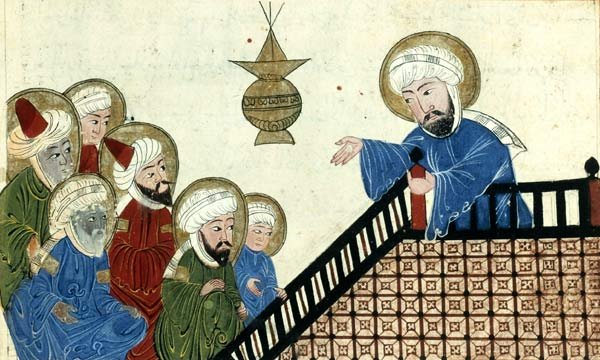The History of the Islamic Revolution in Iran, also known as the Iranian Revolution, was a monumental event in contemporary history. This revolution, culminating in the downfall of the monarchy and the establishment of an Islamic state led by Ayatollah Khomeini, transformed Iranian society and had a significant impact on global politics. In this article, we’ll delve into the complex causes, unfolding events, and consequences of the history of the Islamic revolution in Iran.
Also check out: The History of Judaism

Historical Context
Understanding the Islamic Revolution in Iran requires considering the historical context in which it occurred. Iran, a nation rich in culture and history, had been ruled by an autocratic monarchy under the Pahlavi dynasty, led by Shah Mohammad Reza Pahlavi. The Shah’s regime was widely perceived as corrupt and oppressive, upheld by brutal security forces such as SAVAK.
Causes of the Revolution
Several causes contributed to the widespread discontent that culminated in the Islamic Revolution:
Economic Inequality
Economic inequality was widespread in Iran, with a wealthy elite enjoying privileges while the majority of the population lived in poverty.
Human Rights Abuses
The Shah’s regime was notorious for human rights abuses, including arbitrary detentions, torture, and executions.

Westernization
The Shah’s pro-Western policies, including the modernization of the country and Western cultural influence, were seen as an affront to Islamic traditions.
Foreign Influence
The increasing influence of the United States and other foreign powers in Iran sparked resentment among Iranians.
The Role of Ayatollah Khomeini
Ayatollah Ruhollah Khomeini emerged as a central figure in the Islamic Revolution. Exiled in 1964, he led opposition to the Shah’s regime from Paris and later from Iraq. His message opposing the monarchy and Western influence resonated among the Iranian population.
Khomeini’s Triumphant Return
Khomeini’s return to Iran in February 1979 marked a crucial moment. Massive crowds welcomed him enthusiastically, signaling support for his religious leadership and opposition to the Shah.

Establishment of the Islamic State
Khomeini played a key role in shaping the new Islamic Iran. The 1979 Constitution established a theocratic system led by Islamic clerics, with Khomeini as the “Supreme Leader.”
Unfolding of Events
The Islamic Revolution led to the Shah Pahlavi’s overthrow in January 1979. The Shah’s government collapsed, and Khomeini established an interim government. In the April 1979 referendum, the majority of Iranians voted in favor of transforming the country into an Islamic republic.
American Hostage Crisis
One of the most emblematic episodes of this period was the American hostage crisis. In November 1979, Iranian militants stormed the U.S. Embassy in Tehran and held 52 American hostages for 444 days. The crisis had a lasting impact on relations between Iran and the U.S.
Consequences of the Revolution
The Islamic Revolution in Iran had several significant consequences:
Expansion of Theocracy
The establishment of an Islamic state in Iran had profound implications for Iranian politics, society, and culture. Islamic law, or sharia, became the basis of the legal system.

Regional Conflicts
The Revolution impacted regional politics. Iran became a major player in conflicts in the Middle East, often opposing the interests of the United States and Western allies.
Internal Challenges
The new government faced internal challenges, including political and economic struggles, as well as sectarian tensions within Islam.
Conclusion
The Islamic Revolution in Iran remains a historically significant event that shaped global politics and dynamics in the Middle East. For Iran, it represented a fundamental shift in the power structure and the relationship between religion and government. Understanding the roots, unfolding events, and consequences of this revolution allows us to appreciate the complexity of this historical transformation.









